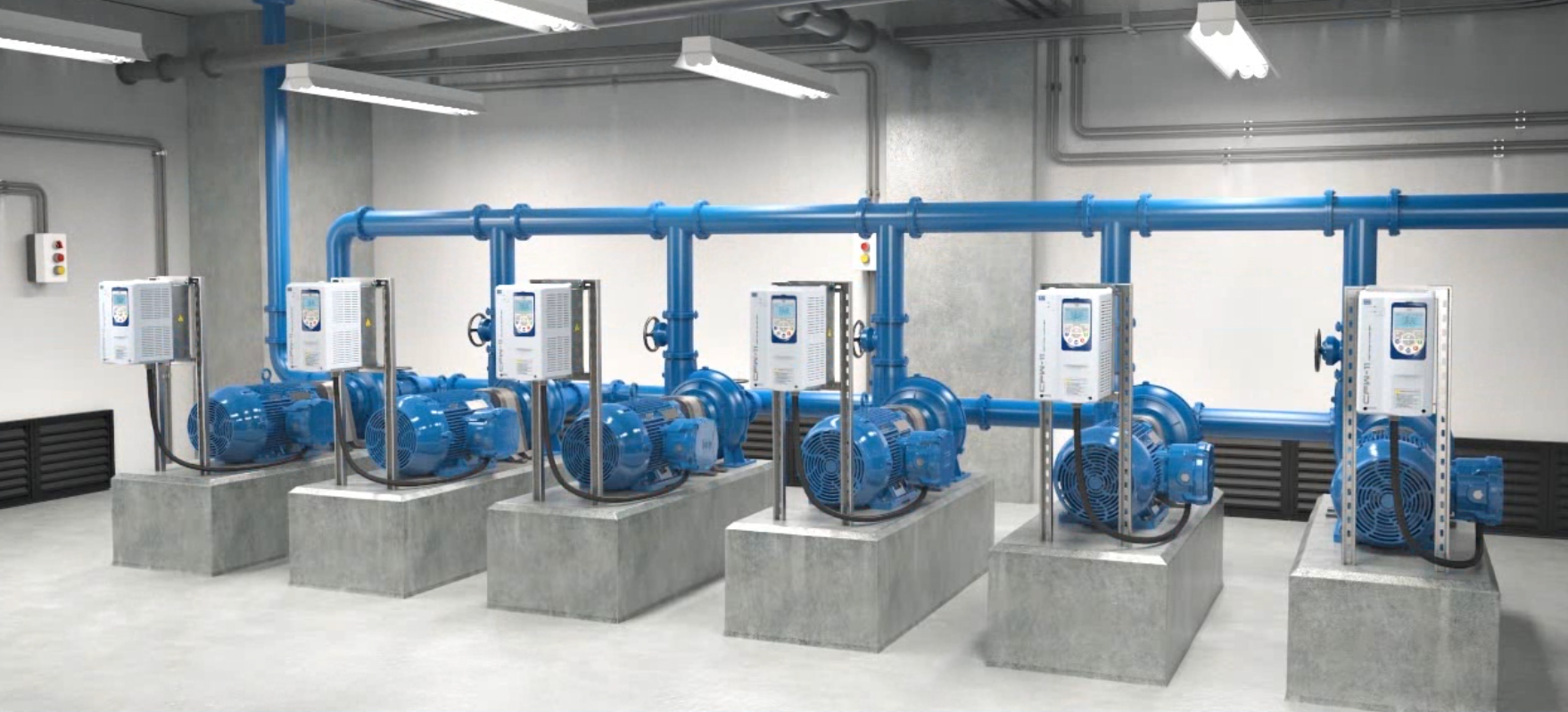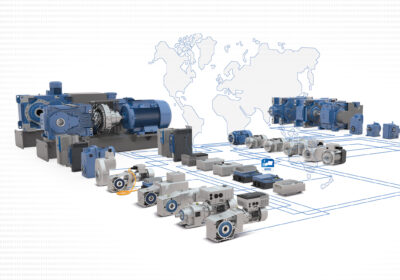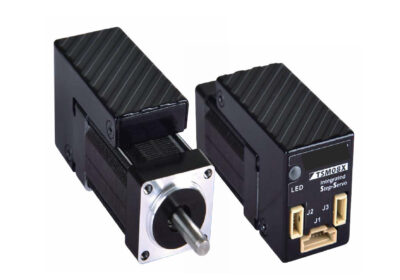~ Reducing energy consumption in pumping systems with advanced drive technology ~
According to a European Commission report, pumping systems account for nearly 22 per cent of the energy consumed by electric motors worldwide and consume approximately 8.7 per cent of global electricity. However, by implementing variable speed drives (VSDs) in pump applications, energy savings of up to 50 per cent can be achieved — depending on the system and its demand profile. Here David Strain, technical director at industrial water equipment supplier Technidrive, explains how VSDs are enhancing pump energy efficiency and performance.
Pump systems are responsible for moving fluids in a wide range of industries, from water treatment and HVAC to manufacturing and chemical processing. They are, by nature, energy-intensive, especially when conventional control methods like throttling valves or on-off systems are used. These older methods typically force pumps to operate at full capacity, regardless of the actual demand, wasting significant energy when the flow requirement is lower.
Reducing wear on mechanical components
Additionally, on-off pumps, with their limited two-speed maximum or stopped functionality, contribute to mechanical wear. This can lead to premature failure and increased maintenance costs. VSDs offer critical protection and maintenance benefits by reducing wear on pipes and valves, as well as minimising excessive stress on the motor’s windings.
VSDs slowly ramp up and gradually stop the pump mechanism, which minimises the risk of mechanical shocks or sudden pressure surges that can damage pipes, joints and seals. Additionally, they can be combined with pressure sensors to maintain a consistent pressure level across the system, regardless of demand fluctuations. This ability to regulate pressure automatically helps prevent both physical damage to components and short-term overloading of the electrical supply with each pump start.
Increased energy efficiency
Unlike traditional fixed-speed pumps, VSDs provide precise control over pump speed, adjusting energy input to match the system’s actual demand. Instead of forcing the pump to operate at its maximum capacity, a VSD allows gradual, optimised control, ensuring the pump runs only as fast as necessary. VSDs also offer significant efficiency improvements compared to throttling valves, which are commonly used to regulate flow and pressure in industrial systems. By using VSDs, companies can eliminate throttling valves and associated pipework, enhancing system efficiency. You may even opt for a lower-power, cheaper pump without compromising performance.
Throttling valves restrict flow, increasing pressure and causing energy loss. In contrast, VSDs control pump speed directly, eliminating the need for such restrictions and preventing energy waste. For example, when flow or pressure requirements decrease, the VSD slows the pump’s speed, cutting energy consumption. Over time, these savings add up to significant operational cost reductions and less frequent maintenance requirements.
The adoption of VSDs has already helped a wide range of industries make huge strides toward their sustainability goals by reducing energy usage, carbon emissions and environmental impact. However, to fully unlock the potential of this technology, pump systems also need intelligent control software to monitor and manage their operation.

Intelligent VSDs for pumping operations
Beyond slowing down or speeding up the pump, modern VSDs like those integrated with intelligent control systems — such as WEG’s Pump Genius — offer even more sophisticated energy management features. These systems continuously monitor and adjust the pump’s operation based on real-time data, such as flow rate, pressure and fluid levels. This ensures optimal energy usage and improves system reliability by preventing issues like cavitation, overheating, or unnecessary wear on the pump.
For systems that use multiple pumps, Pump Genius is a highly advanced solution, capable of controlling up to six pumps in a coordinated system. This software balances wear and tear by rotating pumps in and out of operation and adjusting their speeds to meet system needs. It also provides real-time alerts of potential issues, such as overpressure or low flow, helping operators address problems before inefficiencies or unplanned downtime occur.
Modern VSD systems offer the advantage of integrating intelligent motion controllers, which handle complex tasks that previously required programmable logic controllers (PLCs). This integration simplifies system design and improves performance by enabling each pump to operate autonomously within the overall network, reducing the need for high-performance communication systems.
In conditions where the water level drops or there isn’t enough water to meet the throughput demand, VSDs provide dry-run protection to prevent costly damage to the pump. The system’s sensor network can detect a drop in water level or pressure, prompting the VSD to adjust the flow rate or shut down the pump altogether if necessary. This proactive control not only extends the pump’s lifespan but also safeguards the entire pumping system from operational disruptions.
Sustainability in industrial processes doesn’t have to come at the cost of efficiency or performance. With advanced drive technology and intelligent control systems, businesses can have the best of both worlds — optimising their pump systems to reduce energy usage while maintaining reliable and effective operations.
For more information about Technidrive’s industrial equipment for the water industry visit the website.








